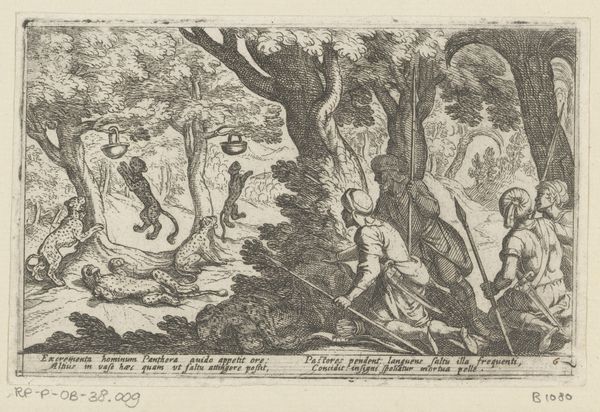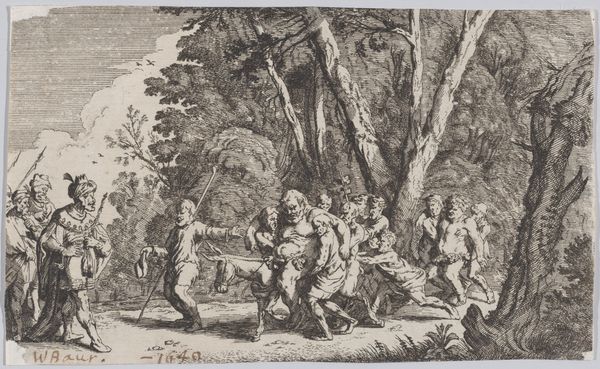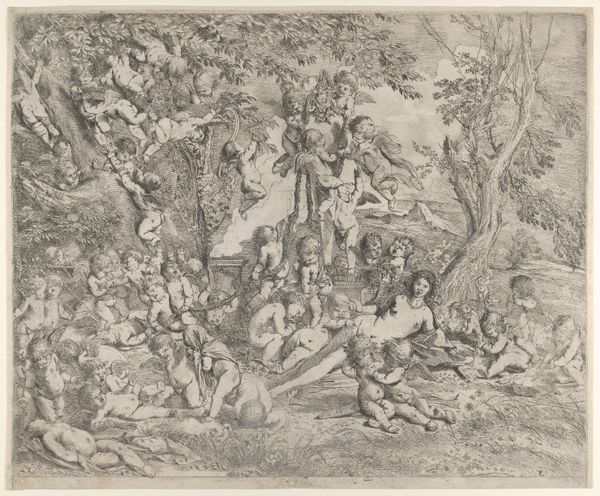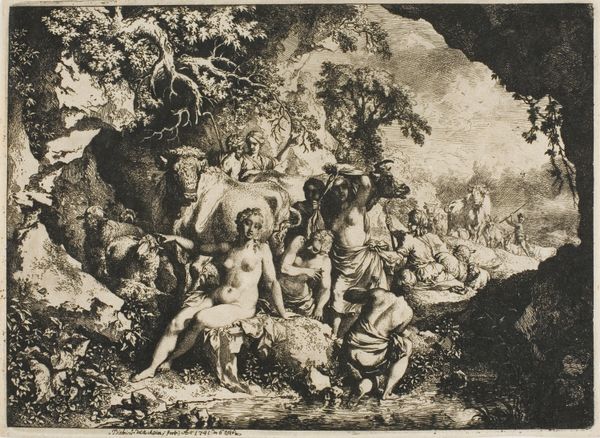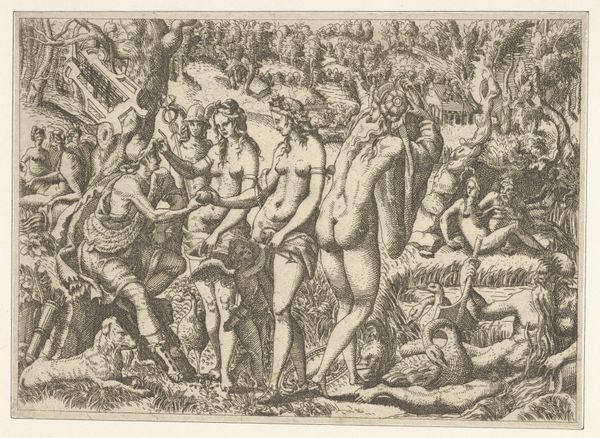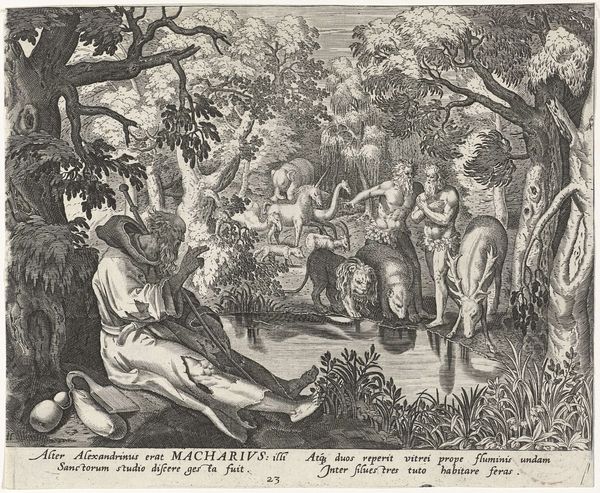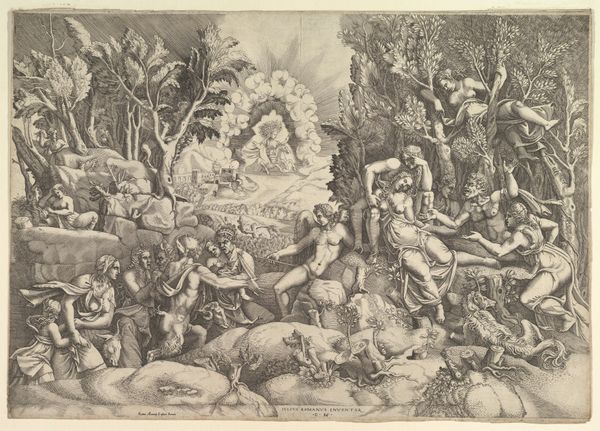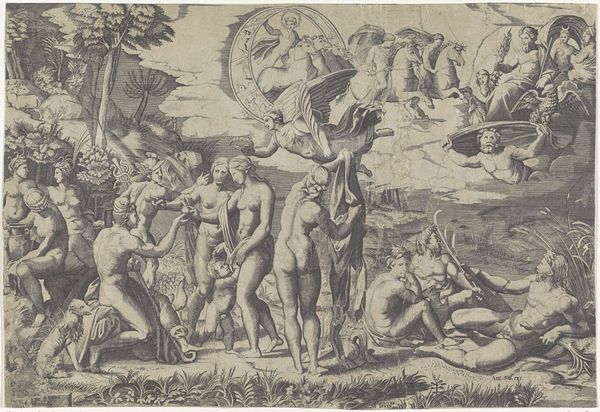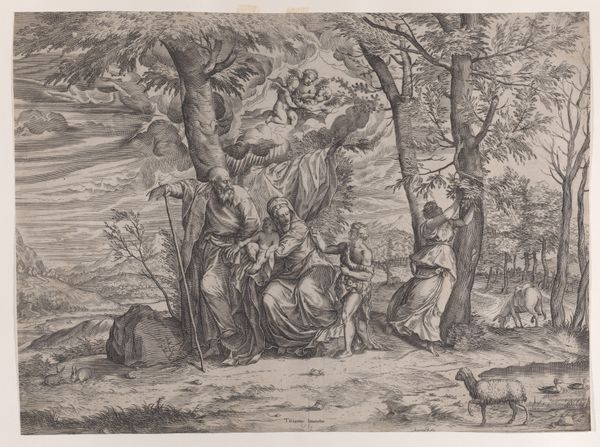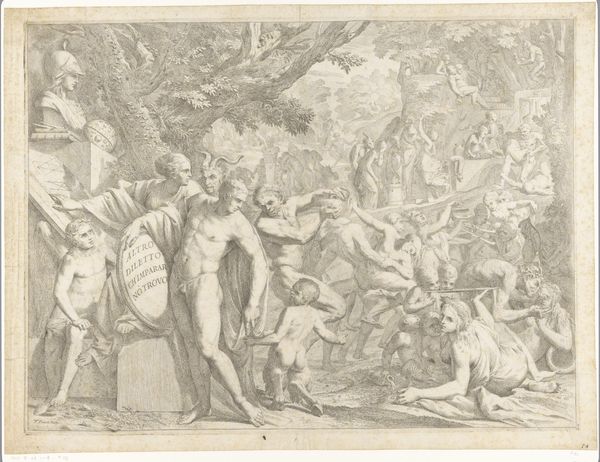
engraving
#
allegory
#
baroque
#
landscape
#
figuration
#
history-painting
#
engraving
Dimensions: height 75 mm, width 127 mm
Copyright: Rijks Museum: Open Domain
Curator: Pieter Serwouters created this engraving, entitled "Mercurius brengt de kleine Bacchus naar de nimfen," in 1614. It's currently held here at the Rijksmuseum. Editor: It's a very busy composition! The dense lines and contrasting values certainly give the scene a kind of frenetic energy. Curator: Indeed! We see Mercury, recognizable by his winged helmet, entrusting the infant Bacchus to the nymphs of Nysa. The nymphs will raise the young god, protecting him from the wrath of Juno, Jupiter's jealous wife. Editor: I'm drawn to the contrast between the muscular, classical physique of Mercury and the more…organic forms of the nymphs. Look how their bodies seem to blend into the landscape, sprouting almost directly from the earth. The wings, resembling leaves, contribute to the integration. Curator: It certainly reinforces the connection between these figures and the natural world, doesn't it? Consider the implications of portraying female figures as extensions of the land, a common trope in patriarchal societies where women were equated to land ownership. Who controls the land controls them, and vis versa. Editor: Right, but aesthetically it generates a dynamic push and pull between artifice, expressed in Mercury's form, and the inherent asymmetry that characterizes untouched nature. Curator: It's fascinating to view it through that lens. The narrative, steeped in patriarchal control, is then subverted by the artwork’s deep-rooted association with nature itself, echoing classical gender-based dichotomies. This visual argument also touches upon the Baroque era’s penchant for depicting allegory, particularly that related to figures rooted in classical antiquity. Editor: Absolutely, that dynamic between form and idea really drives the visual interest for me. Serwouters uses line masterfully, directing the gaze, the rhythm… all in service of that central tension. Curator: Considering its historical context and use of visual tropes, this engraving gives us so much to consider about power, gender, and the very roots of Western representation. Editor: Yes, by attending to the arrangement of line, shadow, and figures in this piece, it reveals not only a compelling story, but offers us insight into our very gaze itself.
Comments
No comments
Be the first to comment and join the conversation on the ultimate creative platform.
